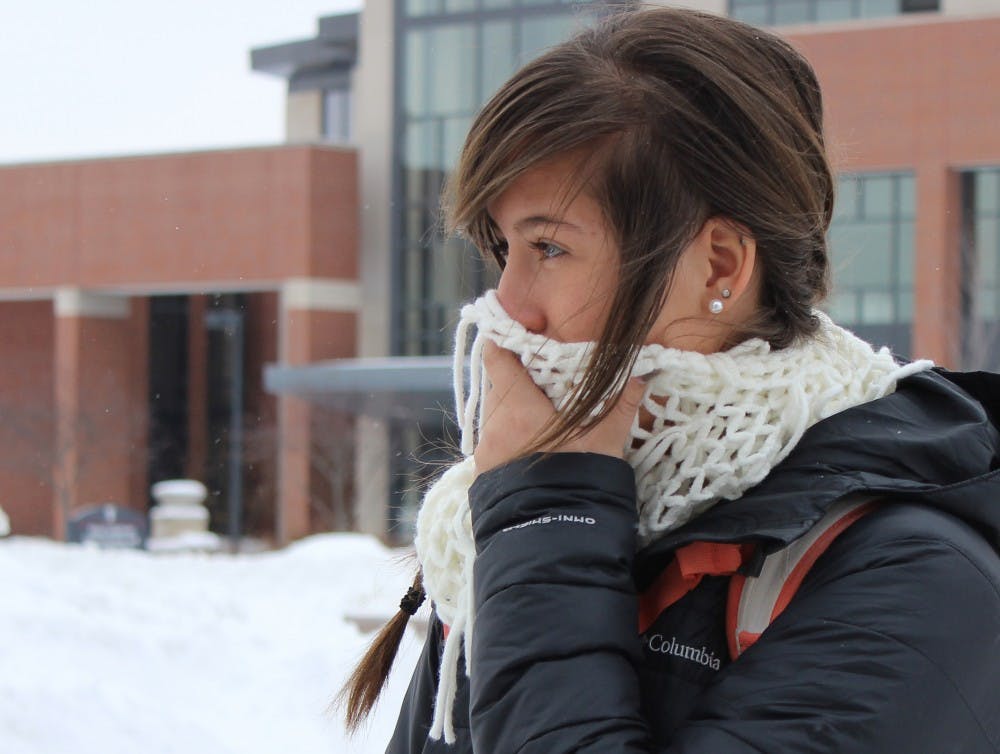Even though snowfall is in the forecast for this weekend, students can expect to have a milder than normal winter, thanks to El Niño, a National Weather Service meteorologist said.
According to The National Oceanic and Atmospheric Administration [NOAA], El Niño results from the interaction of the ocean's surface and the atmosphere in the tropical Pacific. This interaction causes either warmer weather, El Niño, or cooler weather, La Niña.
Meteorologist Amanda Lee said the current El Niño is classified between moderate and strong. This may cause the months of December, January and February to have temperatures 2 to 4 degrees warmer than average, and snowfall 2 to 6 inches less than average.
While the El Niño might last into the spring season, Lee said the weather outlook for the next three months should be affected the most.
David Call, a geology and meteorology professor, said it can be hard to predict November weather. Last year in mid-November, the high temperatures were, on average, 34 degrees — barely above freezing, Call said. But while this year's 70-degree days might seem unusual compared to last winter, the differing temperatures are just a part of November weather.
"November is so dramatic," Call said. "It's the heart of the transition from fall to winter."
Indiana's long-term average for November is a high of around 50 degrees, Call said. With last year's 30-degree days and this year's 70-degree days, the math adds up.
With the potential for warm temperatures coming this winter, Ball State students might not expect to have the several canceled classes they experienced during the winters of 2013 and 2014, Call said.
"Out of my eight winters at Ball State, during three or four of them classes have been canceled," Call said. "It only takes one storm."
But even with the El Niño, snowfall could still remain close to average for an Indiana winter, Lee said. There is a possibility of Indiana's normal snowfall, just with less moisture in it than average.
There are some "hints" in the long-range forecast, Call said, that point toward some larger storms this winter. An El Niño can cause storms, typically appearing in the southern United States. These can drift north toward Ball State's campus at any time.





